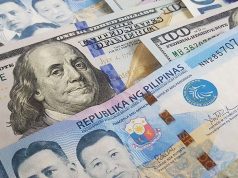BSP estimates 6% GDP growth in 2nd quarter
THE Bangko Sentral ng Pilipinas (BSP) estimates that the economy grew about 6% in the second quarter on the back of government spending and low inflation.
BSP Deputy Governor Diwa C. Guinigundo said on the sidelines of the Pre-State of the Nation Address Economic and Investment Forum on Monday that gross domestic product (GDP) growth was estimated “at about 6%.”
If realized, this estimate will be higher than the 5.6% growth posted in the first quarter of the year, the economy’s worst performance in four years.
The government said the economy will need to expand by an average of 6.1% over the next three quarters to reach the floor of the full-year growth target of 6-7%.
“Government spending is very important,” Mr. Guinigundo told reporters yesterday.
The fiscal balance was in surplus for a second straight month in May, at P2.6 billion — smaller than the surplus of P86.9 billion in April — but turned around from a P32.9-billion deficit a year earlier.
The government spent 7.8% more year-on-year or P314.7 billion in May, with interest payments falling 6.8% and “others” — a category that includes infrastructure and other capital outlays — rising 9%.
“With lower inflation, consumption expenditure will be stronger. With low inflation and low interest rates, private investment will also be important drivers of economic growth,” Mr. Guinigundo added.
On Friday, BSP’s Department of Economic Research estimated inflation in June of between 2.2% and 3% on the back of lower rice and domestic oil prices, downward adjustments in electricity rates and the recent appreciation of the peso.
If realized, headline inflation for June — to be reported July 5 — would have resumed its slowdown after May inflation came in at 3.2%, interrupting six straight months of declines after a nine-year-high of 6.7% in September and October 2018.
The central bank is expected to continue its with easing stance at its August meeting.
During its June 20 meeting, the central bank kept interest rates unchanged, in what it called a “prudent pause” to assess previous monetary adjustments, including the phased reductions in banks’ reserve requirement ratio.
Mr. Guinigundo added he also expects full-year GDP growth of about 6%.
“In effect, if you had a 5.6% in Q1 and Q2 around 6%, Q3 and Q4, which are normally the high-growth quarters, should catch up in the same way that the national government is putting up a catch-up program so that the tight (spending) situation in first and second quarters can be addressed by the third and fourth quarters,” he said.
The central bank’s estimate matched the projection of First Metro Investment Corp. (FMIC) and University of Asia and the Pacific (UA&P), who also expect the economy to rebound in the April-June period.
“[T]he pace hovers around 6.0%, it’s good enough to revive positive sentiment for all economic players,” according to the June 2019 issue of “The Market Call” published by FMIC and UA&P.
“While May inflation may have blipped to 3.2% from 3.0% a month earlier, and NG (national government) infrastructure spending fell in April, these should prove temporary and the economy would rebound starting Q2.”
FMIC and UA&P added they maintained their view that national government spending was expected to go into higher gear in May with the signing of the 2019 national budget on April 15, which “should provide a boost in economic activity” starting in the second quarter. — Karl Angelo N. Vidal



